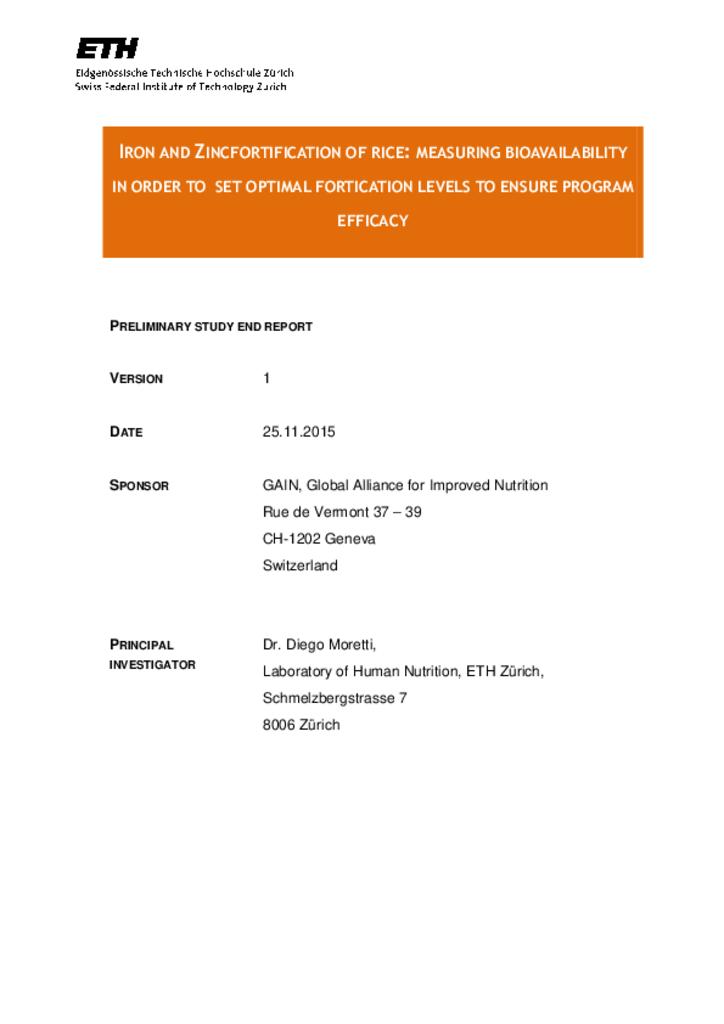Rice fortification has been proven to be feasible and efficacious. As a staple food for over 3 billion people worldwide, it can reach populations in both developing and industrialized countries. However, rice fortification is challenging. It is consumed as intact grains and fortification with iron as it can have an influence on organoleptic properties. The compound of choice for rice fortification is ferric pyrophosphate (FePP), which is water-insoluble and therefore typically has low bioavailability.
This report presents findings from a series of in vivo and in vitro studies to optimize iron fortification of rice in terms of iron bioavailability and sensory acceptability. It has been suggested, that zinc can negatively influence iron absorption. This study also investigated the effect of zinc on iron bioavailability. After screening a range of potential novel iron fortification compounds for rice, the results suggest that FePP remains the compound of choice for rice fortification, despite its low bioavailability.
